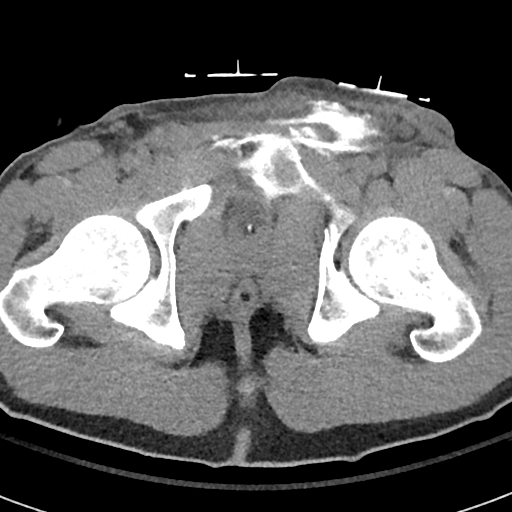In a severe traumatic pelvic fracture, the sheering forces of the trauma or pieces of the broken pelvic bones can lacerate or tear the urinary system. This type of trauma can range in its severity and some injuries can require immediate or delayed urinary reconstruction. In addition to direct trauma to the lower urinary system (bladder, prostate, and urethra), pelvic trauma can disrupt nerves to the bladder and penis and lead to urinary problems like leakage and erectile dysfunction.
Several injuries are characteristic for pelvic fracture.
When the pelvic bones near the prostate and the urethra (urinary channel that passes through the prostate and out the penis) are fractured the forces can tear the urethra from the bottom portion of the prostate. This creates a large gap between the urethral end and the bottom of the prostate. Initially a catheter can sometimes be placed across the gap between the urethra and the prostate. This can help in healing in patients where the urethra is only partially torn or the gap is not very large. If the gap is too large than the urologist may not be able to get a tube across the injury. In this case a catheter is placed across the abdominal wall into the bladder, this catheter is called a suprapubic tube. Most patients where the urethra is completely torn will need surgery to reconnect the urethra in the future.
Surgery to reconnect the urethra is done at 3 months after the injury. During this time patients need to have a catheter draining the bladder coming out the lower abdomen at the top of the bladder called a suprapubic tube. This is changed every month while awaiting surgery. It is important to wait about 3 months to allow the swelling and scarring to resolve before surgery is preformed. Surgery usually takes 2-4 hours and involves removing the scarred tissue and carefully connecting the urethra to the prostate. This surgery is called a posterior urethroplasty. Posterior urethroplasty is a very specialized type of urethroplasty and should be performed at specialized centers that have expertise in the problem.
The bladder can also be torn or “burst” during a pelvic fracture. If these tears are large or urine spills into the abdomen around the intestine they have to be fixed surgically. Usually this leaves very little long-term problems with bladder function and the surgery very reliably fixes the problem. Small tears in the bladder heal on their own with a catheter, which is left in the bladder for about 2 weeks. In some cases the nerves going to the bladder are damaged in the pelvic fracture. This leads to several problems in the bladder that generally result in incontinence (involuntary leakage of urine or accidents). If the incontinence is severe than patients need to be treated with medicines or sometimes an artificial urinary sphincter.
A CT scan that shows contrast that is leaking out of the bladder, which has been injured during a pelvic fracture.

It is very common to have sexual dysfunction after a pelvic fracture. The nerves, which are responsible for erections travel through the pelvis and are very delicate. These nerves can easily be damaged during a pelvic fracture. Often if the nerves aren’t completely severed patients will slowly regain their sexual function over time. There are many very reliable treatments for erectile dysfunction (inability to get hard erections) after a pelvic fracture that range from simple pills like sildenafil (Viagra) to penile implants if the condition is worse. Almost all men can return to a meaningful sexual life after pelvic fracture with the proper treatment. A very important test in evaluating men with erectile problems after pelvic fracture is an ultrasound of the penis. This allows determination if the problem is from a nerve injury or from poor blood flow to the penis.